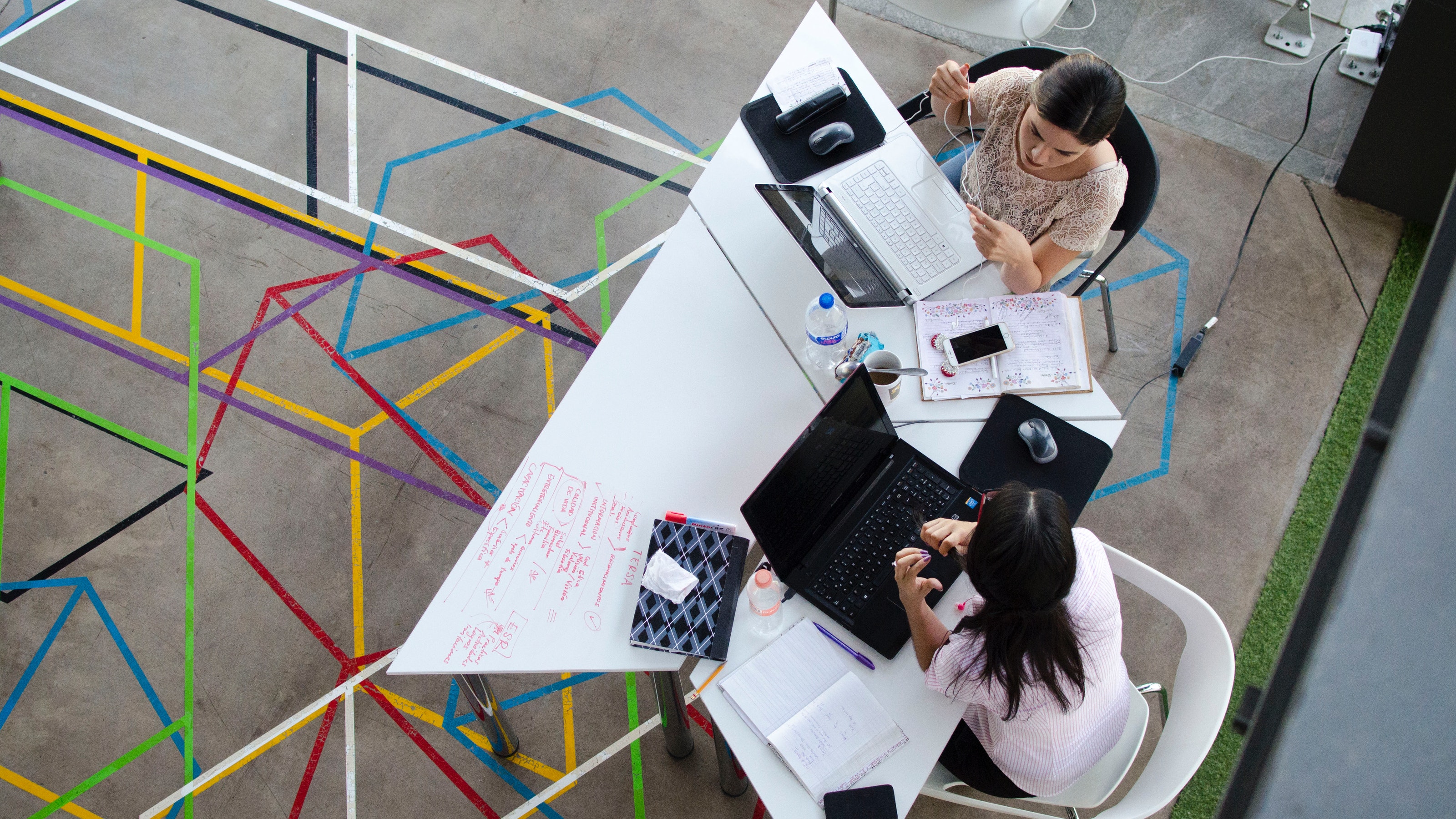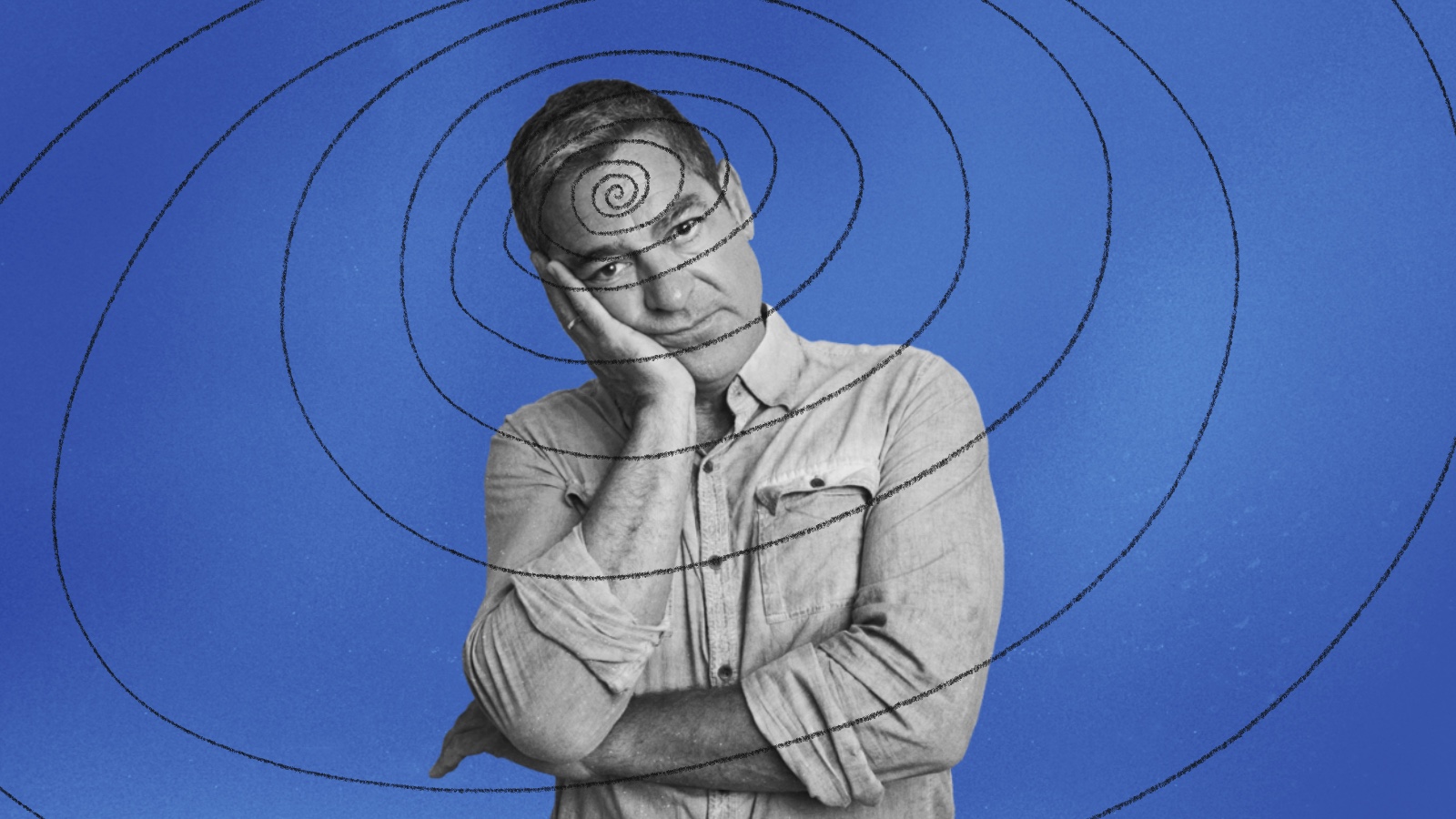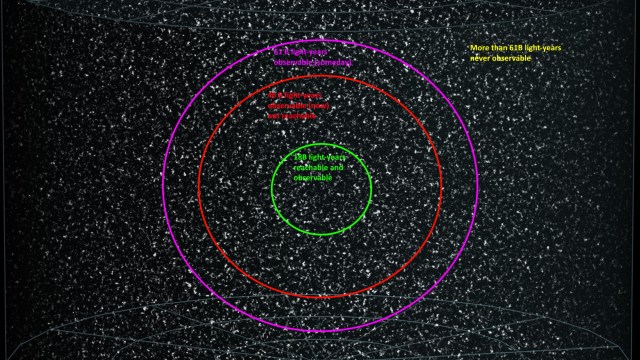Modern workplaces don’t mix well with our ancient survival instincts. Here’s why.

- The modern workplace was not designed with the human brain in mind.
- This disconnect can make it difficult for us to engage, feel safe, and reach our potential at work.
- Developmental molecular biologist John Medina discusses how we can make our workplaces more brain friendly.
Why does a glove have five fingers? The answer seems obvious, maybe too obvious. You’re probably thinking it’s some kind of riddle; maybe if you approach the question from a different angle, a unique solution will reveal itself. Like, it doesn’t have five fingers. It has four fingers and a thumb. (Hmm, not a very good riddle.)
In fact, there is no trick. A glove has five fingers because people’s hands have five fingers. Gloves are ergonomically designed to fit us.
John Medina, developmental molecular biologist and affiliate professor of the department of bioengineering at the University of Washington School of Medicine, opens his book Brain Rules for Work with this question to hint at a vital rule of design: Tools need to be tailored for people using them if they are to be advantageous. Yet, the modern workplace is jam-packed with tools, practices, and procedures that have not been designed for the part of humans that our work is most dependent upon: our brains.
We force our brains to spend hours inside boxed cubicles, try to build relationships over Zoom, and pretend that spreadsheets are more important than whatever is going on at home. None of which our brains have evolved to do — all of which takes its toll on our well-being and ability to engage.
I spoke with Medina* to discuss how we might refashion work to better serve our brains, rather than trying to force our brains to fit work.
Kevin: In your book, you propose ten brain rules to help people improve workplaces and find that elusive “work-life balance.” But to start, I’d like to know what led you to explore the intersection between neuroscience and people’s lives.
Medina: The origin story of my Brain Rules series came on a plane flight, Kevin. I had given a talk in Atlanta, and I was on my way back to Seattle. There was hardly anybody else there — back in those days, you could actually have an empty plane.
I picked up this magazine, and it says “Modern Brain Science.” My Spidey-Sense goes, “Oh, what tasty thing are we going to read here?” It claims, “Modern brain science can now use brain scans to tell you if you’re going to vote Democratic or Republican,” and I’m thinking, “Brain science can’t do that.” I mean, we can’t even tell you how you can pick up a glass of water and drink it – and by the way, we still don’t know how.
I got so steamed that I literally threw the magazine across the aisle. That’s why I have to mention that hardly anybody else was in my section. [Laughs.] Because there are so many of those [neuromyths]: You only use 10% of your brain, or there’s a right-brain personality and a left-brain personality. You need both hemispheres to make a frickin’ personality!
So, I get home, and I’m still a little steamed, and my amazing wife asks what’s bugging me. I told her, and she said, “Well, you could stand on your high horse and throw stones. You could do that. Or you could write about what we actually know. It’ll whittle down the list, but it will certainly take away the spurious stuff and start to put things more on the footing of what peer review says. Then as best you can, translate it for a non-specialist audience.”
That’s the origin of Brain Rules.
Kevin: A quick aside: I read your first Brain Rules book, but not soon enough to avoid spending money on a Mozart kit to grow my kid’s brain.
Medina: [Laughs] There’s more mythology for you. Mozart is wonderful. Doesn’t do a darn thing for your baby’s brain.
A corner office with a Pleistocene view
Kevin: In your book, you mention how the aridification of the African savannah some two million years ago led to important developments in the human brain. How does understanding these developments help us better understand our disconnect from modern work?
Medina: I think there’s a large general answer to the contribution of the environment, and then I can give a specific answer. Let’s start with the general.
We don’t know much about how the brain actually processes information. I’ve been working at it for 40 years, and sometimes I think I know less now than I did before. Even so, we know something about what I call its “evolutionary performance envelope.” These are the conditions under which the brain best processes information, lives within that information, can forward a body of knowledge, and lives within our civilization even.
I couch it this way: The brain appears to have been designed to solve problems related to surviving in an outdoor setting in unstable meteorological conditions and to do so in near-constant motion. That’s what the brain came up with in response to what I like to sometimes call our [species’] uterus — which is essentially the east African plates, the Serengeti, and the sides of the Ngorongoro Crater.
Given that performance envelope, you can say something almost immediately about a practical application in the business world. That being, if you wanted to design a workspace that was directly opposed to what the brain was naturally good at doing, you’d come up with a cubicle. [Laughs.] You’d come up with a desk, you’d come up with a corner office, you’d come up with an office building.
If you wanted to design a workspace that was directly opposed to what the brain was naturally good at doing, you’d come up with a cubicle.
The human brain was built to solve problems that we no longer solve in the specific sense of that word. We’re still interested in surviving, but we’re no longer outdoors. In certain civilizations, the brain is still reacting as if it was in the Pleistocene epoch, even though we have climate control now.
Once you have that general answer, you can see some specifics. For example, Jay Appleton came up with something called the prospect-refuge theory.
Where you’re going to optimize certain cognitive components of our thinking abilities — arranging from processing speed to memory, all kinds of stuff — is an environment that has prospect. Prospect is the ability to take a look out and see your environment spread out. You can see where the predators are; you can see where the water source might be and where the food will be. We love prospect.
But Appleton hypothesizes that’s not the only preference we have. We also need to have refuge because we are so physically weak. Take a look at your canines, right? They won’t do well against a raccoon. Take a look at your claws. Those don’t do well against paper. [Laughs.] We need to be able to hide. We want to have the ability to move off into a cave, someplace where we feel protected.
So, there’s this tension between the need to see the environment, and the ability to escape to a place of safety. There are office buildings that specialize in maybe one or the other. But it would make sense to me that a series of testable ideas would be to create workspaces that take advantage of both. A place where you can see lots of things and somewhere you can pull away from all that stimulus and sit there and just cogitate or feel safe. That experiment would definitely be worth doing, rather than keeping with the designs we currently have.
Kevin: Why do you suppose we have cubicles then? Everyone thinks they are horrible, our minds weren’t developed for them, and yet they are everywhere.
Medina: [Laughs.] Yeah. I don’t know. So much of what we do is brain unfriendly. You could say the same thing about the classroom, frankly. We’ve essentially industrialized it.
Kevin: I’m curious if you’ve seen this ideal office space in the corporate wilds. A place that manages the prospect-refuge balance?
Medina: Not in an office, but I have seen it in a museum, and it blows me away every time I go there.

Kevin: Oh?
Medina: It’s the Getty Center in Southern California. One, it sits on top of a hill, Kevin. If you look to the south, you can see all of Brentwood. You look to the west, and you can sort of see the ocean. It has wonderful prospect; you can just feel your Tanzanian roots start to well up in you, and your brain goes, “Ah, finally back in the Serengeti.”
There is refuge if you want it, too. There are several places in the museum where you can tuck yourself away. And there’s even a visual treat in there. You turn the corner, and by God! There’s a Rembrandt. [Laughs.]
Kevin: [Laughs.] Right.
Medina: The simplest architectural element I can think of that has prospect and refuge is a balcony — particularly one attached to a hotel room. You can go out to the balcony and see all the prospect you need. When you want to retreat, you can go back into your hotel room.
Survival instincts in the workplace
Kevin: From the perspective of our brains, what is one thing that we are ignoring or getting wrong when we go to work every day?
Medina: I’d probably say there are two things, and they both spring from an aspect of the performance envelope. Specifically, the aspect of solving problems related to survival.
The brain is not interested in productivity. It’s not interested in the bottom line, and it certainly can’t stand your spreadsheets. It’s interested in one thing: survival. It’s interested in safety so that it can pass along its genes to the next generation. We need to take that seriously, but a lot of people think they can ignore the safety needs of another professional. They can yell at them all day long. They can do all kinds of things.
When you ignore the survival instincts of the brain, people are actually working at a suboptimal level. Researchers have asked the question, “What happens to your brain’s productivity when you yell at somebody?” This can be solved through something called a Raven’s Matrices test.
The brain is not interested in productivity. It’s not interested in the bottom line, and it certainly can’t stand your spreadsheets. It’s interested in one thing: survival.
Are you familiar with the concept of working memory?
Kevin: Yeah. It used to be called short-term memory, right? And you can keep seven bits of information in your working memory at a time.
Medina: Yes. Seven pieces of semantic memory, specifically. There are lots of different types of memory.
Well, you need your working memory to be productive. Your brain puts all kinds of stuff in there so that it can make fast associations, do pattern matching, solve problems, and whatnot. Except if you are being yelled at. When that happens, your working memory scores can be cut in half. You don’t focus on the job at hand or what your boss might have said. You begin focusing on the yelling.
This comes from another batch of cognitive neuroscience we can talk about: “weapons focus.” This is the work of Elizabeth Loftus, who, years ago, was at the University of Washington’s psych department.
Imagine something awful has happened to you, and a weapon is involved. You go to the police to file a report, and they interview you about what happened. What drives law enforcement crazy is that there is often associated amnesia. You can’t remember the perpetrator’s eye color, but you can go on and on about the weapon. It was a 9mm. The safety was off. It was cocked at a 45-degree angle. That’s weapons focus.
Why is that important here? If you yell at somebody, you have essentially turned your mouth into a weapon. When that happens, the person is only hearing your verbal aggression. They’re no longer interested in your subject matter. You’ve essentially weaponized your words. That’s one of the things that business people get wrong: the extraordinary importance of safety and survival.
Many hands make light work (and apex predators)
To answer that question another way is to consider the importance of relationships. You can ask a good question here: How did we become the apex predator of this planet given, as we’ve discussed, that we’re so wimpy. Why did we make it? Well, we think we became the apex predator because of an extraordinary path we chose.
If you want to be apex, there are lots of ways to do this, but a big one is to double your biomass. Wait millions and millions of years, create a large body column, and maybe become the size of a T. rex. That’s not the path we chose because we’re still five-foot-eight. [Laughs.]
Another way is to change something in the brain that allows you to create the concept of an ally. You control your behaviors together in a way that is systematized and cooperative. You coordinate the hunts. You coordinate your rituals. You coordinate all kinds of things. You essentially double your biomass without doubling your biomass. The only thing you need is to be able to perform and sustain positive, high-performance relationships together.
This, by the way, is Robin Dunbar’s work. It’s called the social brain hypothesis, and it’s important for us to understand because at the heart of what makes us human are those things that make us relational.

I’m beginning to see a trend that’s reemerging with all the layoffs occurring. It’s called bossism in my world. You have an authoritarian leader that says it’s going to be this way or that way. Stack ranking is pitting people against each other. There is a whole range of relationally unfriendly things going on. Maybe businesses have gone too far in the other direction — making it so much of a romper room that nothing got done — but the opposite is also a problem. We don’t seem to have a middle ground.
But one of the middle components that we need is the relational aspects of who we are. Are you familiar with the concept of the theory of mind? It was coined by [David] Premack and [Guy] Woodruff. It’s the ability to understand the intentions and motivations of somebody else with very little queuing. It plays a powerful role in forming relationships and is as close to mind reading as the brain gets.
If you were angry with me, there is no reader board on your forehead, Kevin, that says, “Kevin is angry at John right now.” [Laughs.] I’m going to have to infer your state — on some of your words, the way your face is looking, different things. But I’m going to have to infer something I can’t actually see. In fact, one of the reasons Zoom meetings can be so powerfully disruptive is that we often don’t have enough cues to go on.
Kevin: I’m amazed stack ranking is still a thing after the Enron debacle.
Medina: I think people were blinded by Jack Welch, who was doing it originally too.
What’s missing in all of this is the fact that you have a human heart underneath the brain that you’re trying to make productive. The highway between those two cannot be ignored if you want productivity to be achieved. If you are competing against other people that are nearly as talented, but you may be off by one or two standard deviations and therefore lose your job — well, that’s about as brain unfriendly as a cubicle.
A work-life reality check
Kevin: At the top of the interview, I mentioned “work-life balance.” As you point out in the book, there’s a problem with that concept in that it suggests there’s a working part of your brain and a home part – another neuromyth in the making.
How can this understanding help us build a better … I don’t know what the phrase should be. Work-life integration? Work-life harmony?
Medina: I like the word realistic. [Laughs.] I’m not sure that you’re going to have a work-life balance or harmony. I’m not even sure what that would be. But realism brings to mind that, even if you don’t want to, by golly, you are going to carry the things that happen at work home with you.
If you don’t sleep well tonight because you’ve got a big meeting tomorrow, that lack of sleep will carry over to the office. You won’t be able to do the presentation very well. So, the idea that there is a home life that can be separate from the work life is a joke. They both affect each other, and there’s an equilibrium. The best way you can think of it is how to establish compatibility between those two experiences, given that both have to be experienced by a single brain.
When I was writing the book, Google discovered that the attrition rate of women exiting work after childbirth was twice the normal average. Twice! Google was losing women after they had babies, left and right, but that difference disappeared when the company introduced paid maternity leave.
Now, I don’t mean to get overtly political here, but providing maternal leave for married couples reduces the overall divorce rate. Did you know that?

Kevin: I did not.
Medina: John Gottman showed that with the introduction of the first child, marital conflict usually goes up by quite a bit — sometimes as much as twice by the time the baby is six months of age. The reasons are manifold. Parents don’t get a break. They don’t get as much sleep, so they’re not optimizing. They don’t have time to be with the child, which would be their top priority. So, the ability for the workplace to look at that and say, “You know, there isn’t a working brain and a home brain. There’s just a brain. Maybe if I can lower the divorce rate in my workers, they’ll be better workers.”
I would argue that the moral argument is the strongest here, but you don’t have to be altruistic. You can argue it purely on productivity.
And there’s a long-term idea, Kevin, that overarches all of this: What happens to a kid in the first 36 months will affect the rest of their life. It is extraordinary how much of a sponge, how plastic, how powerful the infant brain is at absorbing information — even up to five years of age. It’s huge.
If American businesses were really interested in the long-term success and productivity of the culture in which they are making their money, one of the first things they would do is ask, How are the babies doing in this culture? What can we do to affect an environment that would give that baby the best shot at developing normally? The very least you would come up with is maternity and paternity leave and care.
This information, by the way, is available anywhere. Being present in the first years of a kid’s life is extraordinarily important to their long-term productivity.
Kevin: Makes sense.
Medina: It just seems straightforward to me. One of the things my Brain Rules journey has shown me, over and over again, is how much we ignore how this thing works.
I keep thinking another long-term solution would be to introduce an entire developmental brain science course to MBA programs — maybe even a series of courses. I think every boss on the planet should know about theory of mind and how much it contributed to our ability to be successfully apex. I think they should know about the first three years of life in granular detail, particularly for those bosses who have the authority to make decisions over other people’s life courses.
I keep thinking another long-term solution would be to introduce an entire developmental brain science course to MBA programs.
Kevin: In a way, every business is an ongoing neuroscience study.
Medina: Yeah. I would argue that productivity in the workforce, of your people, is all about how their brains work. Why don’t you know how those brains work? I would think that would be an integral part of training for any future business major.
Treating Mondayitis
Kevin: For each brain rule in the book you offer a practice to implement next Monday. What is a next-Monday suggestion that you’d recommend for readers of this interview?
Medina: Besides buying the book? [Laughs.] No, no. The book’s doing well.
The brain is still reacting as if it was the Pleistocene epoch, even though we have climate control now.
I think a large takeaway from this interview is to realize that the brain follows certain rules of engagement. For the most part, we’re just beginning to understand what those are. And so our attempts at trying to be practical are sometimes remedial. In the book, I’ve given my best shot at showing things that have both been in the peer review and then replicated, often many times, in order for it to remain as solid as could possibly be.
But understanding that the brain follows certain rules and not others — that you can’t yell at somebody and expect them to thank you or that you can’t ask questions about our evolutionary history and not run directly into our powerful need for relationships — is extraordinarily important. You cannot change those. They are a part of who you are, a part of the human experience. The sooner we know about those, the sooner we allow those data to percolate into our lives, and the sooner we begin doing test questions that allow us to discover the best way to implement them, the happier we’ll be.
Most everything in the Brain Rules universe is simply to say, “This is what we know.” Also, to be as careful as possible about applying what to do next Monday. You’ll notice that they’re off in the shortest parts of any chapter
Kevin: Where can people find you online to learn more?
Medina: Brainrules.net is probably the place to go. You can get all of the books there. I’m going to start a Substack soon. The details are still being worked out, and when that happens, I’ll certainly let everybody know. But for now, brainrules.net.
Learn more on Big Think+
With a diverse library of lessons from the world’s biggest thinkers, Big Think+ helps businesses get smarter, faster. To access Big Think+ for your organization, request a demo.
* This conversation has been edited for length and clarity.





